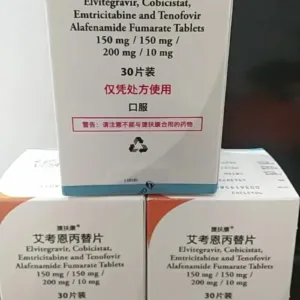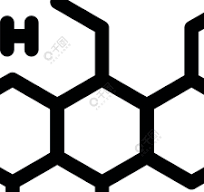heparin
Functional Indications:
1. Used to prevent and treat thrombosis or embolic diseases, and disseminated intravascular coagulation caused by various reasons. 2. Used in hemodialysis, extracorporeal circulation, catheterization, microvascular surgery and other operations and for anticoagulation treatment of certain blood specimens or equipment. 3. Used for early frostbite, chapped, ulcers, eczema, superficial phlebitis and soft tissue injuries. 4. Treat unstable coronary artery disease, such as unstable angina and non-Q-wave myocardial infarction.
Dosage:
There may be differences in the usage and dosage of different dosage forms and specifications of this product. Please read the specific drug instructions for use, or follow your doctor’s advice. Heparin sodium injection: 1. Deep subcutaneous injection: 5000-10000 units for the first time, 8000-10000 units every 8 hours or 15000-20000 units every 12 hours thereafter; the total amount every 24 hours is about 30000-40000 units, generally satisfactory Effect. 2. Intravenous injection: 5000-10000 units for the first time, then, or 100 units/kg every 4 hours according to body weight, diluted with sodium chloride injection and applied. 3. Intravenous drip: 20,000-40,000 units per day, added to 1000 ml sodium chloride injection for continuous infusion. Before infusion, 5000 units can be injected intravenously as an initial dose. 4. Preventive treatment: For patients with high risk of thrombosis, it is mostly used after abdominal surgery to prevent deep vein thrombosis. Give 5000 units of heparin subcutaneously 2 hours before surgery, but the anesthesia method should avoid epidural anesthesia, and then 5000 units every 8-12 hours for a total of about 7 days. Heparin sodium cream: for external use. Apply to the affected area 2-3 times a day. Heparin Calcium Injection: This product is administered by subcutaneous injection in prevention and treatment. It is administered by intravascular injection during hemodialysis. The following injection doses are expressed in “AXalu anti-factor Xa activity international units IU”. 1. During spinal anesthesia, epidural anesthesia or lumbar puncture, special precautions should be followed when administering low molecular weight heparin. 2. Subcutaneous injection technique: During subcutaneous injection, the patient should be in a lying position, and the injection site should be in the subcutaneous tissue of the anterolateral or posterolateral abdominal wall, alternating left and right. The injection needle should be inserted vertically and completely into the skin fold held between the injector’s thumb and index finger, rather than inserted horizontally. Skin folds should be maintained throughout the injection procedure. 3. To prevent blood clot formation during hemodialysis, the optimal dose should be selected based on the patient’s condition and hemodialysis technical conditions. A single dose of this product should be injected from the arterial end of the vascular channel at the beginning of each hemodialysis session. For patients who are not at risk of bleeding, the following starting doses can be used according to their weight: 0.3ml, 0.4ml, and 0.6ml respectively for those weighing less than 50kg, 50-69kg, and greater than or equal to 70kg. For patients with bleeding tendencies, the above recommended dosage should be appropriately reduced. If the hemodialysis time exceeds 4 hours, adjustments should be made based on the observed effects of the initial hemodialysis, and then a small dose of this product should be administered. 4. To prevent thrombosis, for ordinary surgery, 0.3ml per day, subcutaneous injection usually lasts for at least 7 days. The first dose is given 2 to 4 hours before surgery (but use caution 2 to 4 hours before surgery for those using subdural anesthesia). 5. For orthopedic surgery (conventional anesthesia), 40AXalu/kg is administered subcutaneously 12 hours before surgery on the first day, 12 hours after surgery, and 24 hours after surgery. 40AXaIU/kg was administered daily on the 2nd and 3rd postoperative days, and 60AXaIU/kg was administered daily on the 4th postoperative day. Lasts at least 10 days. Please refer to the instructions for details of the actual application reference dose. 6. Therapeutic medication: The therapeutic dosage for deep vein thrombosis should be determined according to the patient’s weight and high risk of thrombosis or bleeding. The general daily dosage is 184-200AXaIu/kg, given in 2 times (i.e. 92-100AXaIu/kg bid), every 12 Dosing is given once every hour for 10 days. Please refer to the instruction manual for the recommended dosage for actual application. 7. It should be noted that for patients weighing more than 100kg or less than 40kg, it is difficult to estimate the dosage, and insufficient low molecular weight heparin dosage or bleeding symptoms may occur. Clinical observation should be strengthened for these patients. 8. Treatment duration: Low molecular weight heparin should not be used for more than 10 days, including the time for balancing with anti-VitK preparations. Oral anticoagulants should be used as soon as possible unless contraindicated.
Adverse reactions:
The bleeding tendency is low, but there is still a risk of bleeding after taking the drug. This product may occasionally cause allergic reactions (such as rash, urticaria); rare moderate thrombocytopenia and mild hematoma and necrosis at the injection site. Adverse reactions are listed below according to system organ class and frequency of occurrence (use the following convention to classify adverse reactions according to frequency of occurrence: very common ≥1/10, common≥1/100 and <1/10, uncommon≥ 1/100 and <1/100, rare≥1/10000 and 1/1000, very rare<1/10000). 1. Blood and lymphatic system abnormalities: (1) Very common: bleeding in different parts, especially in patients with other risk factors. (2) Rare: thrombocytopenia (including heparin-induced thrombocytopenia), thrombocytosis. (3) Very rare: hypereosinophilia, reversible after treatment is discontinued. 2. Immune system abnormalities: Very rare: hypersensitivity reactions (including angioedema and skin reactions), anaphylactoid reactions. 3. Metabolic and nutritional abnormalities: Very rare: reversible hyperkalemia associated with heparin-induced aldosterone suppression, especially in patients with combined risk factors. 4. Abnormalities of the hepatobiliary system: Common: elevated transaminases, usually transient. 5. Reproductive system and breast abnormalities: Very rare: priapism. 6. Abnormalities of skin and subcutaneous tissue: (1) Rare: rash, urticaria, erythema, and pruritus. (2) Very rare: skin necrosis (usually at the injection site). 7. Systemic abnormalities and conditions at the injection site: (1) Very common: small hematoma at the injection site. In some cases, the appearance of indurations may be seen that are not caused by heparin; these indurations usually disappear after a few days. (2) Common: injection site reaction. (3) Rare: Calcinosis occurs at the injection site. Calcinosis is more common in patients with abnormal calcium-phosphorus product, such as in some patients with chronic renal failure.
Medication contraindications:
Heparin Sodium Injection: It is contraindicated in those who are allergic to heparin, have a tendency of spontaneous bleeding, have slow blood coagulation (such as hemophilia, purpura, thrombocytopenia), ulcer disease, trauma, postpartum hemorrhage and severe liver insufficiency. Heparin sodium cream: 1.
Share:
Products
Our offers
Health Classification
Let us work together to protect precious health
































